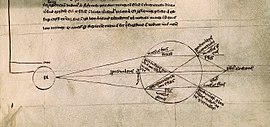Lincolnshire’s First Scientist by Jim Snee
 Lincolnshire is known for many things, and in today’s society, it is rightly celebrated for its agriculture and its natural beauty. If you think of science, you probably look elsewhere, to university towns and modern cities, but Lincolnshire has produced its fair share of scientists and left an indelible mark on how the people of the world see the universe.
Lincolnshire is known for many things, and in today’s society, it is rightly celebrated for its agriculture and its natural beauty. If you think of science, you probably look elsewhere, to university towns and modern cities, but Lincolnshire has produced its fair share of scientists and left an indelible mark on how the people of the world see the universe.
For archaeologists, one Lincolnshire name immediately comes to mind. The 18th century antiquarian and physician William Stukeley, from Holbeach, is very much a great grandfather of archaeology, and his observations on ancient ruins, many now lost, are a valuable source of information, still consulted in modern research. So, we can say that Lincolnshire has a fine heritage of Heritage itself.
Given the beauty of the county’s wide-open spaces, the natural sciences are an obvious field in which Lincolnshire should provide eminent specialists and unique discoveries. Locally figures such as the 18th/19th century ornithologist Charles Thorold Wood, the 19th Century entomologist Hamlet Clark and the 17th Century entomologist Eleanor Glanville made discoveries in the county, whilst also contributing to the general study of their respective disciplines. One individual took matters, quite literally, a lot further. Sir Joseph Banks of Revesby is world-famous for his participation in Captain Cook’s first great voyage, but his greatest contribution was his part in establishing the Royal Botanic Gardens, Kew as a repository of botanical information that has few, if any, rivals in the world.
Whilst it might be expected that Lincolnshire to inspire the natural sciences, it has also had a significant influence on the study of physics. Most people are familiar with the name Isaac Newton, the 17th Century physicist from Woolsthorpe Manor, near Grantham. His work on light, gravity and motion are still the building blocks of our understanding of the universe, but as he himself admitted, he wasn’t the beginning of our story; “If I have seen further it is by standing on the shoulders of Giants.”
The Renaissance is credited with enormous leaps in scientific knowledge as the ancient Greek and Roman philosophies were rediscovered. The reality is that as the centuries of war between Christians and Muslims eased into relative peace the movement of trade, people and ideas increased and a huge body of maths and science from the Middle and Far East became available. This placed the classical world of the Mediterranean back in the centre of global learning, and it is natural for scholars to look towards figures like Galileo as the giants to which Newton referred.
However, recent studies into the history of science are beginning to suggest that the Renaissance may have been more style over substance, and that medieval science was a lot more advanced than previously believed. That being the case, we can look a lot closer to home for Newton’s giants and Lincolnshire’s first scientist.
Robert Grosseteste was a 13th century Bishop of Lincoln. He is also credited as one of the founders of scientific method. As a scientist, he proposed methodology which involved the use of experiment to replicate observations of the natural world. This methodology was taken up by other medieval scholars and was the basis of Galileo’s work in Italy. Robert wrote a number of works on scientific subjects including optics, the nature of light, tides, astronomy and mathematics. He is credited with the first attempt to establish a single set of physical laws that explained the workings of the cosmos. He also had some pretty big ideas about the nature of the universe itself. In particular, he proposed that the universe was created by a tremendous explosion and that the matter from this explosion crystallised to form the stars and planets. Seven hundred years later a more detailed version of this idea was established as the consensus of the global scientific community, although we know it by the rather vulgar name of Big Bang theory. Not bad for a 13th century Bishop, and Lincolnshire’s first scientist.
